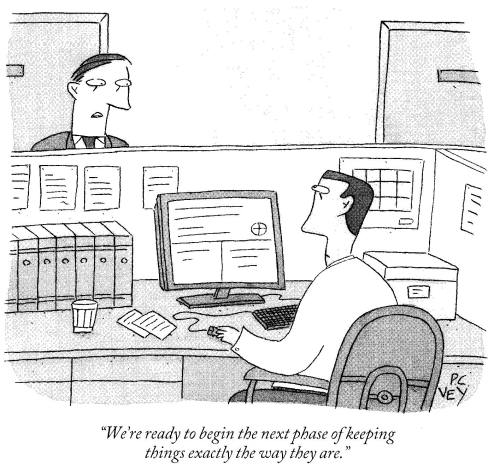Rebellion, Revolution, or Just Pushback?
Two recent articles suggesting an end to the current phase of test-driven accountability and market-based reforms got me thinking about how hard it is to sort out differences between what I hope will occur and what actually is happening.
In one piece–”The Coming Revolution in Public Education”–John Tierney sees current incidents of resistance to current showpieces of school reform from educators, parents, and legislators as a revolution in the making. The evidence he submits to readers comes from instances of teachers refusing to give tests, parents boycotting exams, prosecutors indicting administrators for cheating, and legislators reducing numbers of tests.
In the other piece, “Failing the Test,” David Kirp lists setbacks to current school reforms citing similar evidence that Tierney does but adds instances of districts (e.g., Montgomery County, Maryland, Aldine, Texas, Union City, New Jersey) where long-term efforts have produced solid gains in student achievement without resort to market-based reforms.
I know that evidence well that Tierney and Kirp provide; I have tied together the same bits and pieces into a story of growing parent and educator resistance to the harmful effects of too much testing, too much standardization, too much concentration on schools helping the economy to grow. But do all of these efforts in stringing together these instances of grassroots rebellions constitute a political movement or that a revolution is around the corner? Or are these cascading events akin to seeing a false dawn, another example of wish trumping reality?
These cartoons, of course, don’t help me make up my mind on whether there is, indeed, finally, a gathering counter-movement to market-oriented school reforms that have settled into schools as the “new” normal over the past three decades.
Gauging whether discontented teachers refusal to give their students tests or scattered parent boycotts of tests and similar incidents constitute an emerging “revolution” in K-12 public schools is as dicey as basing a vacation on a weather forecast six months from today. So what kinds of evidence would I look for that would be closer to a 24-hour forecast?
1. Common Core standards being rejected by over a dozen state. Currently, five states, including Virginia and Texas, have refused to hop on the bandwagon. Republicans have come out against the Common Core recently because of the federal weight being put behind implementing the standards. Legislators in South Dakota have expressed deep reservations about the standards. Indiana has “paused” implementation of the Common Core.
2. At least ten states withdraw from adopting new national tests of Common Core standards slated for 2014-2015. Utah and Alabama have already dropped out of the consortia designing new tests. Indiana legislators halting implementation of the standards includes the possibility of the state withdrawing from the consortia charged to create a national test of the standards. Whether recent disruptions in online testing in four states will lead to dropouts is unknown but online delivery of tests has so far run into massive technical difficulties with the new tests less than two years away.
3. More state and local school boards officially reduce number and frequency of tests as Texas is about to do. The Texas Senate has passed a bill to reduce the number of existing end-of-year tests for getting a diploma from 15 to five. A similar bill in the Texas House of Representatives. This comes within a year of hundreds of Texas school boards passing resolutions condemning the amount and frequency of standardized tests. Florida, a stronghold of aggressive standardized testing and grading schools on their performance is having second thoughts. As is occurring in New York state.
4. Student and parent boycotts of standardized tests spread from suburbs to small towns and big cities across the U.S. Parent and student boycotts in taking state standardized tests have been scattered and sporadic (See here, here, and here). Thus far, these protests against tests have been isolated and uncoordinated. Should they coalesce, however, into regional and then a national movement that includes small towns, affluent suburbs, blue-collar suburbs, and big city minority parents and students, state and local officials would have to think again about the number of tests they administer, their frequency, and worth to the enterprise of teaching and learning in schools.
5. Business and civic leaders support publicly the reduction of standardized tests and penalties administered to failing schools. CEOs and mayors coming out against too many standardized tests or local chambers of commerce criticizing the harshness of accountability regulations have yet to occur. I have found no instances of such activities by business and civic leaders.
Were such evidence described above to materialize, I would then say that what appears as isolated instances of pushback against the dominant school reform model of the past three decades is much closer to a rebellion but not yet a revolution.
This blog post has been shared by permission from the author.
Readers wishing to comment on the content are encouraged to do so via the link to the original post.
Find the original post here:
The views expressed by the blogger are not necessarily those of NEPC.



